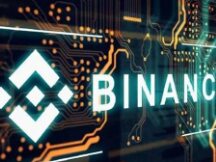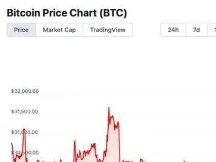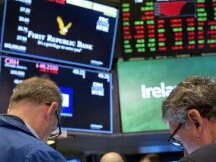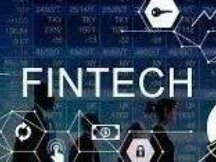BIS President: Who will oversee future financial policy? CBDC versus Bitcoin Stablecoin
This information is intended for executives of Financial Institutions for International Settlements.Augustin Carstens ofJanuary 18, 2022 from the Faculty of Law (ILF) of the Goethe UniversitySpeaking at the conference "Information, Digitization, New Finance and Central Bank Digital Currency: The Future of Business and Finance"!
Here is the full text:
Thank you to the organizations that have invited us today. It is a pleasure to present the lecture at Goethe University. Of course, personally, I would like to be able to go to Frankfurt.
In a presentation at this university four years ago, I talked about the volatility and downsides of cryptocurrencies like Bitcoin. Since then, debates about the future of money have grown, but they still cover the basics of finance.
Today we are going to take inspiration from the name Goethe University. The great wife Johann Wolfgang von Goethe is a real and genuine world tourist. He was a poet, novelist, playwright, theater director, babysitter and politician. In particular, his work predicts some of the great economic problems of our time, including the independence of medium-sized banks.
Goethe's work faces significant challenges. In his masterpiece Faust, he mentions the word “Gretchenfrage” which has become synonymous with questions about life.
For central bankers, Gretchenfrage is always: What is the soul or meaning of money? Engineers, innovators and futurists today answer this question. Some say finance and future finance will come from a handful of big tech companies. Another dream of decentralized systems where blockchains and algorithms change people and homes. All of this will likely happen in the Metaverse.
My theme today is simple. The terms of the claim are not tech companies or anonymous listings. The key to money is trust. So the question is, which organization is best for building trust? In my opinion, intermediary banks are, and always will be, the best institutions for ensuring trust in the digital age. It is also the best way to ensure efficiency and financial inclusion that benefits everyone.
We'll go into more detail, starting with the basics of financing.
the basis of funding
Money is a relationship. People are paid today in the hope that others will receive it tomorrow.
In fact, trust in money binds the monetary system. Like the law, this trust is good citizens. Its maintenance is essential to the well-being of the community.
In order to gain confidence, you need a solid setup that can stand the test of time. According to the principle of business account, as a means of storing and exchanging value, it is an organization that ensures the safety of money and ensures the security and regularity of payments .
Throughout history, measured in centuries rather than years, independent banks have become an important source of trust in these funds. Options often end badly. Most countries have medium-sized banks that have a clear responsibility to help people, and why. As part of federal policy, central banks have gained confidence in the transition to financial exchanges.
In doing so, the central bank strives to bring lasting changes to the changing technological, business and social environment. This is why medium-sized banks are involved in digital exchanges. They are developing new central bank products such as wholesale financial markets, infrastructure, rapid payment systems, and central bank digital currencies.
Of course, in the market-based system, the private sector remains the main driver of the economy. In today's two-tier monetary system, deposits are usually the type of money held by tribes because their cash reserves are relatively small. Banks, in turn, keep deposits at the central bank as "bank reserves".
In these contexts, central banks provide an open, neutral, reliable and stable platform. Private companies use their expertise and assets to develop new payment methods and new financial products and services. This integration has become a powerful driver of innovation and community health.
But we cannot accept this success. If it goes too far, some recent improvements could have a public-type financial impact.
To illustrate this, we present our possible scenario for the future of finance.
First, large tech stability coins compete with the national currency and compete with each other, resulting in fragmentation of the monetary system.
The second has to do with the vague promises of cryptocurrencies and financial regulation or "DeFi", which claim to provide financially unaffected, but may offer different variations.
The third recognizes the vision of an open global financial system that uses technology for the benefit of all.
You can guess what I support. Finally, we'll talk about what it takes to make this vision a reality.
big techbusinessstablecoins
We will start with the stability coins released by the big companies. Stablecoins are cryptocurrencies based on collateral value, usually in the form of a commercial bank or other financial institution. Therefore, they rely on the confidence of sovereign currencies. In the first case, fixed income securities are provided by large companies or companies whose main activity is digital services.
Big tech companies play an important role in financial backing. Their new products and innovations have brought hundreds of millions of new users into financial management.
In the process, they have also established good relationships in many major countries. For example, tech companies control 94% of mobile payments in China.
This model could be accelerated if one of these companies improved the way donations were made and established a significant closed ecosystem around their own global coin stability.
As they mature, companies can create problems for new entrants, leading to market dominance, data concentration, and reduced competition. Additionally, fixed coins can break the average of traditional banks and increase financial security risk.
Also, if a big tech company is firmly established, others will try to take it. Finally, we can end up with a huge garden that divides the national and international economy by competing with each other and with national interests. The well-known problem of market concentration will soon disappear as interest begins to fade.
Moreover, the same energy that promotes participation can lead to racism, invasion of privacy, and industry concentration. One of the reasons is that the data is affected externally. For example, information about one person may be disclosed to information about another. Additionally, administrators will know more about their user behavior than they do. Access to specialized information allows large technology companies to grow and become market leaders.
Let me be clear. It is undesirable to rely on personal money. Users will start to see that it is easier to pay with stable global coins from major tech companies. But in doing so, they can send the keys to our finances to a private revenue-driven source and guarantee only traders and other insiders. Such placement can lead to trust. Public assets like money should be guarded with the public interest in mind.
Unclear promise of decentralization
The second possible scenario for the future of the currency is attracting more and more fanatics. This vision transforms organizations into distributed digital technology (DLT) devices, enabling everyone to become a network device user. This has happened in the development of cryptocurrencies such as so-called decentralized finance or "DeFi" and applications based on them.
DeFi fanatics promised just about anything. The DLT will be "financially independent" and will eliminate intermediaries such as the big banks. In general, a new decentralized policy will be the basis of "Web 3.0" or "web3". In a world where big tech company data is replicated, entrepreneurs and artists will bear most of the costs they incur.
Decentralization can be a noble goal. In many applications, control improves when the power is real, systematic and balanced. This principle applies to free and competitive marketing.
However, this policy is not a DeFi request provided. There is a big difference between vision and reality.
So far, the DeFi site has been heavily devoted to speculation. Users invest, borrow, and trade crypto assets in a poorly managed environment. Non-regulatory features such as Know Your Customers (KYC) and financial protection will be key to the development of DeFi.
In fact, a combination of financial processes has emerged that revolves around two things.
The first is to start making contracts, or "smart contracts". However, these contracts are not smart enough to cover all possibilities, so you have to write and modify the code and run the platform. In fact, DeFi has many bases. This “decentralization illusion” has been discussed in recent research by BIS economists.
The second element is a quantity call permanent. Improve this drive this defi. Their goal is to move the platform across the road to the traditional financial financial institution because the court is anchored. The stabilized call is the same as the geography of defi (Ginison and other possibilities are unstable.
However, fixed income securities may not be good money. One downside is that to get a mortgage you have to attach your own value to asset management. Their advisors are particularly incentivized to invest in risk-free stored capital resources for income. Without legislation, advocates will not be able to promote or test the benefits of assets deemed safe.
More fundamentally, decentralization has a cost. Trust in the anonymity process is maintained by independent witnesses who ensure the integrity of the list without a regulatory basis. Therefore, the system must create sufficient value or rent to incentivize these consumers.
These loans are usually generated by insiders such as Bitcoin miners or token administrators. These rentals are also one of the reasons why DeFi platforms attract investors. Many processes generate energy in situations where the person with the most tokens has more power.
Finally, high rents for Insiders mean high costs for consumers. So, while insiders who sell tokens to new users receive valuable rewards, the positive benefits for modern users are still unknown. Scams, hacks and so-called sweepstakes scams happen in an uncontrolled environment.
Moreover, this architecture makes it difficult to classify the total to be measured. Getting approval in big networks takes time, effort and energy. The larger the list of networks, the more difficult it is to update quickly.
This is why many DLT machines so far can only perform small tasks on the exchange and often suffer from network outages. This is also why Bitcoin needs more energy. There are many marketing strategies to solve this trade-off, but everything is more complicated. The fact that the lease requires an inducement on the blockchain is unique, not a bug. It's "more is worse", not "more is better".
With the growing popularity of different blockchains, more and more competitors are aiming to become real competitors.
At the same time, DeFi suffers from the same drawbacks as traditional financial services. Significant effort, inconsistencies, and poor connectivity to proper financial processes mean that DeFi's failure to do so could lead to widespread financial damage. As with short-term money market stock trades, stability coins are likely to run during volatility. With automated processes, interruptions may not occur as leaks and drips are stopped by the system.
So when the "magic" begins, you can get out of your hands. As in Goethe's Zauberlehrling ("The Sorcerer's Apprentice"), DeFi applications can come to life, interfering with each other invisibly. In the face of conflict and financial loss, consumers will inevitably turn to public institutions, trust and knowledge to manage their independence and reorganize.
There may be a better way. New applications developed by a stable financial institution can be insured. It should be personal and trustworthy, not anonymous. They must respect the financial rules intended to ensure the security of the system. Wherever secure assets are placed, they must be managed appropriately to address risks such as completion, payment risk, and business effort. It also needs a strong and coherent international policy for a stable economy.
Don't be afraid of regulators, innovators must work with regulators to ensure the reliability and sustainability of their products.
The system is open and international as a good citizen
In the third case, major financial corporations, large technology companies, and innovators compete in open markets that result in corporate-created joint ventures. Public Bank. This means that end users can interact with different vendors, both internally and across borders.
This will lead to continued innovation and better results for the entire industry. The belief in money is also the foundation of security. End users will find security, privacy, and a variety of payment options, as well as affordable and convenient services. This scenario uses Big Data, DLT, and business models that promote competitiveness and financial independence.
In this view, the monetary system is not divided into thin-walled gardens or dominated by a handful of large corporations. There are still no high rents for anonymous network insiders.
At the heart of the system is the central bank. They help people, not money. They have no commercial interest in personal information. They act as agents, supervisors and enablers in the payment, management and supervision of private public service providers. The partnership could include a digital credit banking system (CBDC). Unlike fixed income securities, CBDCs do not have to borrow a reputation. Because it is issued directly by the central bank, it inherits the trust citizens already have in the currency. Thus, it can be a solid foundation for future innovation.
Banks can provide this base in their country or abroad.
Consider the global CBDC network. Other central banks will develop and release new forms of public funds based on interest and financial preferences.
Importantly, central banks can work with each other and with private companies to enable these CBDCs to operate across borders. This requires technological compatibility, the ability of the machine to "interoperate" and to accept rights and obligations. To do this, central banks can choose to create two-way connectivity, adopt a hub and speaker model, or adopt a single platform. DLT can be used to connect multiple out-of-bank CBDCs across different media. This would be beneficial as no central bank could cover all the different benefits of the system.
Such a network would be a global version of home banking based on the trust of central banks. It can reduce the cost of cross-border payments, increase speed and transparency, and expand to users in other countries. Private service providers may interact with customers to get to know them and perform other follow-up inspections. Private companies can be created through this process for a wide range of financial services, from new payments to loans, insurance and investment services. However, protection gives users control over their personal information. This eliminates the need to sell tokens that are only used to promote insiders.
The BIS Innovation Center has played an active role in realizing this vision through a series of experiments involving central bank and private sector participation. Specifically, many of these activities rely on the distribution of technological equipment, for which central banks play an important role. Based on a reliability superior to rental, these systems overcome the difficulties of measurement. It also offers better security and better performance. All three major BIS development sites use the DLT platform. Here, many central banks offer their own wholesale CBDCs for participants to trade with faster, cheaper and more secure cross-border payments.
Under the Jura project, each central bank manages the CBDC itself on a platform with a separate network.
· Each central bank involved in the mBridge project sets up its own CBDC and manages the certification of the sharing system.
The Dunbar project explores the strengths and weaknesses of different DLT prototyping and validation mechanisms to support a multi-CBDC platform.
Overall, these actions show that new technologies, including DLT, can be useful if used in a developed way by existing companies in the financial sector. The central bank does not make money from mining, but follows the consumer. Instead, they have incorporated this role into their public service program.
Working with industry partners in the regulatory environment, the BIS and national banks have developed products for the public that have been thoroughly reviewed and prepared for release in the real world.
Therefore
Let me explain. The future of money is what we will make of it. Central banks are excited about digital exchanges, but we are also aware of the consequences of some use of digital exchanges.
Create value for money that affects people, such as fairness and security of money and payments, market concentration, consumer rights and efficiency. Therefore, central banks must work with other public and private actors to achieve the vision I have described.
Let us innovate in a solid and stable way by harnessing the power of technology in a manner consistent with our shared advantages. In particular, let us ensure that the financial system put in place by the existing financial management, works for the public good, and works with the private sector.
Let us therefore return to my starting point, Goethe. Gretchenfrage's answers have not changed. Mid-size banks and public schools are also the glue that holds cash and money together. Human services and innovation are important and must succeed on these bases. But faith can never go out or be used.

Scan QR code with WeChat































